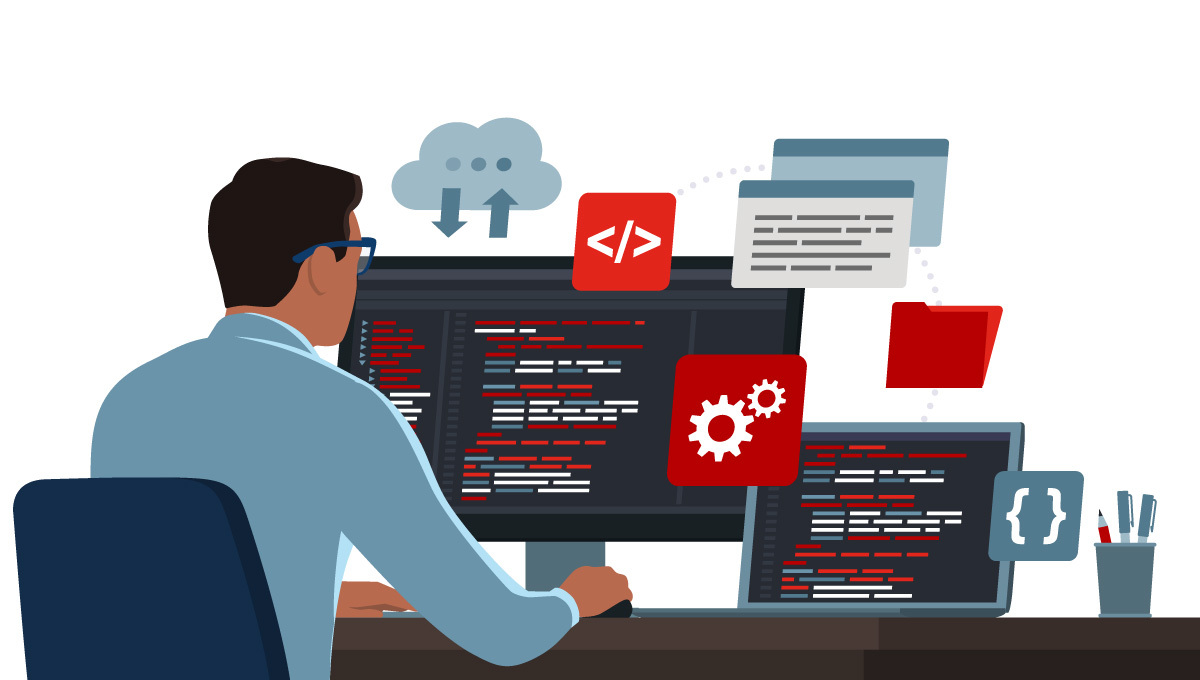
In a world where speed and quality are the cornerstones of technology innovation, teams are racing against the clock to deliver solutions that not only work but have a competitive edge. Nevertheless, within this fast-paced environment, the path to success is jeopardized by the allure of deceptive shortcuts, quick fixes, and entrenched habits, collectively known as anti-patterns.
We’ll expose six common anti-patterns that may be, knowingly or unknowingly, ingrained in your software delivery organization, reveal their costly repercussions on efficiency, productivity, and morale, and arm you with ways to circumvent them. For a deeper dive, read the eBook 6 Mistakes Hindering Software Delivery Efficiency
Anti-pattern #1: Misaligned expectations between technology and business.
Misalignment between business and technology leaders often causes conflicting priorities, leading to slow delivery and reduced productivity. Unrealistic targets can cause missed commitments, revenue losses, and burnout. Moreover, without clear visibility, business leaders may overburden tech teams, unaware of their capacity or workload.
To spot this anti-pattern, look for siloed metrics within departments. Technology teams might be tracking system reliability and outputs, while business teams are measuring revenue and customer metrics.
How to mitigate this anti-pattern
Mitigating this anti-pattern involves creating composite metrics that merge technical and business KPIs into a unified view. Establishing cross-functional teams to link technical performance with business results and investing in solutions that provide visibility across the entire software delivery lifecycle is also crucial. Solutions like Planview Viz incorporate generative AI tools with conversational user interfaces to make metrics accessible in both business and technical language.
Anti-pattern #2: Lack of visibility into dependencies
Hidden dependencies commonly disrupt software delivery, necessitating constant reprioritization. Such unseen interdependencies erode trust in delivery schedules, forcing teams to devise extra buffers and backup strategies to handle unpredictability. This approach inevitably leads to erratic market release times and diminishes the customer experience.
This anti-pattern can be identified by significant gaps between customer-facing feature delivery and internal engineering progress, work scattered across numerous small teams, and considerable process duplication among platform or functional teams, such as testing and security.
How to mitigate this anti-pattern
To combat this anti-pattern, employ dependency mapping with tools such as Planview Viz to visually represent task interdependencies. Utilize generative AI, like Planview Copilot, for immediate insights into potential risks and hidden dependencies. Streamline workflows through software toolchain integration solutions like Planview Hub, reducing inter-team dependencies and handoffs. Additionally, cultivate a continuous improvement culture where teams consistently assess and enhance dependency management processes.
Anti-pattern #3: Demand outweighs capacity
Overburdened with excessive work in progress (WIP), technology teams suffer from productivity loss and slower delivery due to frequent context switching and added overhead. Managing WIP efficiently is crucial to achieving goals, ensuring customer satisfaction, and avoiding employee burnout.
This anti-pattern is evident when there’s an imbalance between WIP and work released. Teams struggle to meet commitments, leading to customer delays. Additionally, there is a reliance on proxy and qualitative delivery metrics.
How to mitigate this anti-pattern
Mitigating this anti-pattern involves implementing a dashboard that accurately represents active work, wait states, connectivity, and visibility. Additionally, it’s crucial to analyze data within context, noting that an increase in Flow Load, indicative of rising demand, typically correlates with a decrease in Flow Velocity, signaling a slowdown in workflow efficiency.
Anti-pattern #4: Unsustainable release and deploy batch sizes
Large batch sizes complicate releases, increasing risks and sacrificing agility. Teams struggle to respond to changes, gather feedback, and meet evolving needs. This inflexibility leads to longer lead times, higher overhead, and a greater chance of errors during deployment, hindering prompt and effective value delivery to customers and potentially reducing satisfaction.
This anti-pattern is recognizable by lengthy release checklists, set windows or timeframes for releases instead of an efficient CI/CD pipeline, limited automation in release processes, and difficulty in prioritizing customer feature requests.
How to mitigate this anti-pattern
Mitigating this anti-pattern involves breaking down work into smaller, manageable units, eliminating bottlenecks and manual tasks, and investing in infrastructure and tooling. By dividing large epics into smaller user stories, automating repetitive tasks, and conducting regular retrospectives, teams can streamline the release process. Additionally, providing development and operations teams with the necessary resources and support, such as software toolchain integration, can enhance continuous delivery.
Anti-pattern #5: Neglect proactively addressing technical debt
Unresolved technical debt leads to cumbersome, unstable platforms, driving up costs and slowing delivery. McKinsey notes that over 20% of the technical budget for new products goes to fixing tech debt issues. Without recognizing this maintenance work, leaders miss essential data for making informed trade-offs and priority decisions.
This anti-pattern can be identified by a rise in quality issues and bugs, customer complaints regarding unstable platforms or poor performance, hindered innovation, and diminished developer productivity.
How to mitigate this anti-pattern
Mitigating this anti-pattern involves prioritizing technical debt by its impact on quality, satisfaction, and business goals. Trade-offs should be made visible, factoring technical debt into capacity planning and resource allocation and balancing it against feature development and innovation. Establish metrics and KPIs to measure technical debt’s impact on business outcomes, including customer satisfaction, time to market, revenue, and product quality. Discover how Included Health used Flow Metrics to resolve and prioritize technical debt.
Anti-pattern #6: Building versus buying technology solutions
Organizations often overestimate their capacity to develop custom in-house metrics and integration solutions, overlooking the hidden costs and lost productivity that make this approach impractical. Scalability issues, toolchain disruption, and maintenance demands can plague in-house solutions, diverting critical time and effort from key business goals such as revenue growth.
This anti-pattern is characterized by an ongoing dependence on outdated or incompatible solutions for metrics and integrations, a lack of attention to the organization’s changing tool landscape and data sources, and the diversion of resources from revenue-generating activities to develop in-house solutions.
How to mitigate this anti-pattern
To counter this anti-pattern, invest in technology solutions that offer analytics for software delivery and automated integrations. Tools like Planview Viz, Planview Hub, and Planview Copilot can preemptively spot and tackle issues before they escalate, offering insights into operational efficiency and aiding resource allocation.
Accelerate software delivery by overcoming anti-patterns
Addressing anti-patterns is crucial for organizations aiming to enhance productivity and accelerate software delivery. By leveraging value stream analytics, generative AI, and toolchain integration solutions such as those provided by Planview, businesses can streamline their time to market, heighten efficiency, and align technology with business goals. Overcoming anti-patterns is the cornerstone of building an agile, resilient, and sustainable enterprise. Read the eBook eBook 6 Mistakes Hindering Software Delivery Efficiency to learn more




